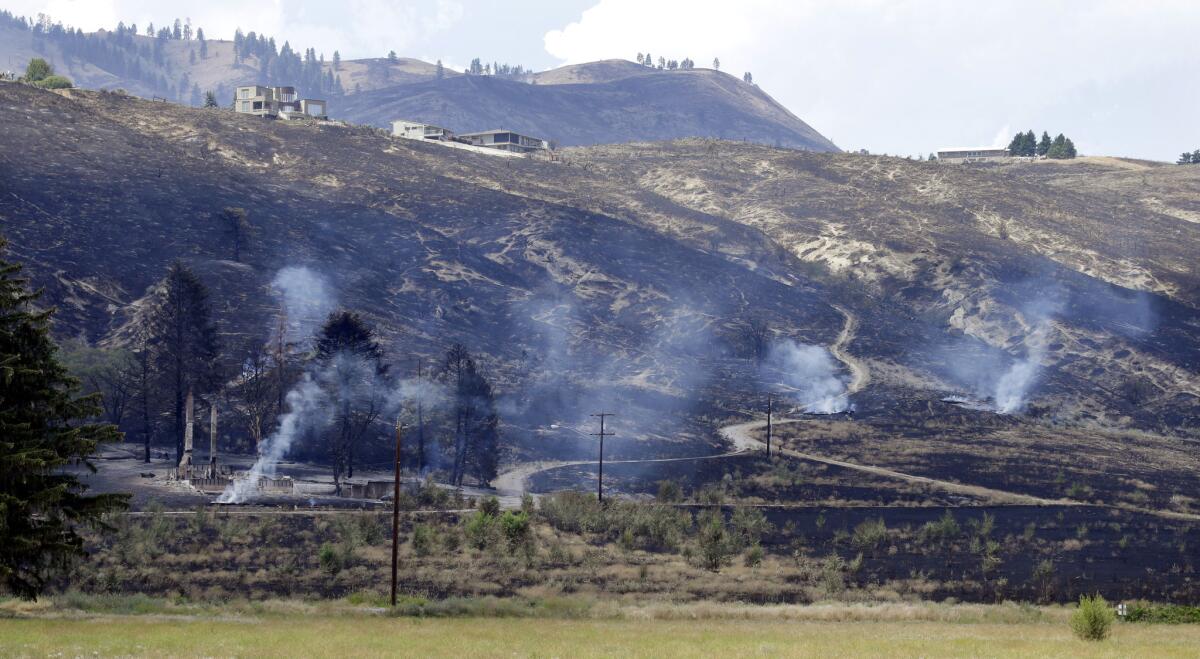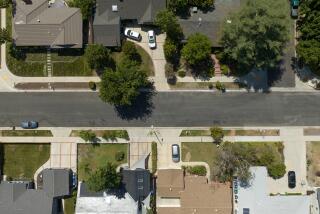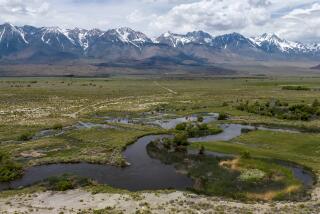As Washington’s peculiar drought continues, Puget Sound cities asked to cut water use 10%

The foundation and chimneys from a destroyed home continue to smolder from a wildfire that raced through the area the night before, June 29, 2015, in Wenatchee, Wash. The wildfires hit parts of central and eastern Washington over the weekend as the state is struggling with a severe drought.
- Share via
Reporting from Seattle — Three months after Gov. Jay Inslee declared a drought emergency in Washington state, three of the biggest cities in the Puget Sound region are asking residents to cut their water use by 10%.
For now, the restrictions are voluntary here in this normally damp area on the west coast of the Evergreen State – so named because historic weather patterns usually ensure a bright, leafy green landscape.
Washington’s drought is a peculiar one, a so-called snowpack drought rather than a rainfall drought. In fact, on Wednesday, the same day state agencies launched a water conservation blog, Seattle enjoyed a thunderstorm. Some rain is forecast for the coming weekend.
But the region has endured its driest May-to-July on record, summer temperatures have soared and fall is expected to be drier than normal too. An early wildfire season has stretched water supplies and emergency responders.
So Seattle, Tacoma and Everett have banded together to manage dwindling water supplies, “for people and fish during the drought and higher-than-normal water use,” city officials said in a joint statement.
They have set up a website -- www.savingwater.org – with tips for reducing water use and plan to publish an update Aug. 24 to gauge how well residents and businesses are meeting the 10% mark. Among the suggestions that have become old news in baked California: Taking shorter showers, watering lawns less, washing only full loads of dishes and laundry, checking for plumbing leaks.
At the state Capitol -- a normally lush, 485-acre campus -- fountains have been shut down, most lawn irrigation has been stopped, low-flow plumbing devices have been installed and signs have been posted on the parched grounds boasting, “Conserving Water: Fountain off during drought.”
The three cities each operate a regional water system that supplies customers within its own boundaries and in smaller municipalities nearby. Together, they serve a population of nearly 2.2 million, or nearly a third of the state.
“It’s been an unprecedented year for low stream flows and fish” said Bob Everitt, Region 4 director of the state Dept. of Fish and Wildlife. “Both young and old are being stranded across the state. We would greatly appreciate any reductions in water usage that would save water for more instream flow.”
Although the reductions are voluntary, if drought conditions worsen the cities will each decide whether to enforce mandatory and greater restrictions.
Follow @marialaganga for national news
More to Read
Sign up for Essential California
The most important California stories and recommendations in your inbox every morning.
You may occasionally receive promotional content from the Los Angeles Times.











